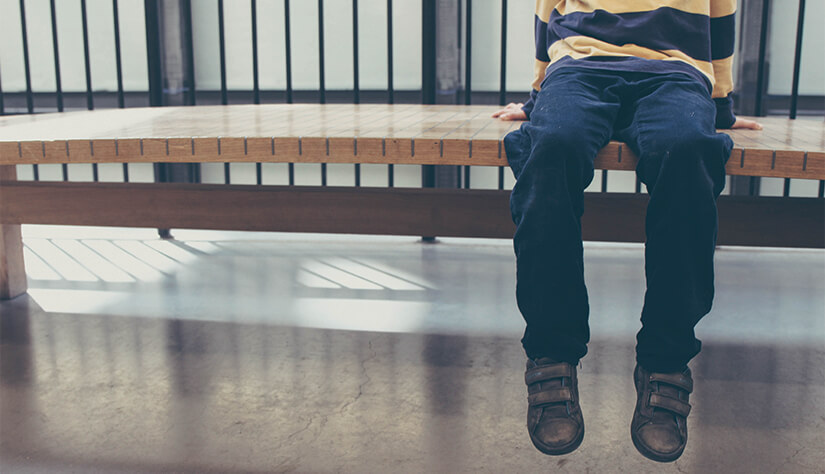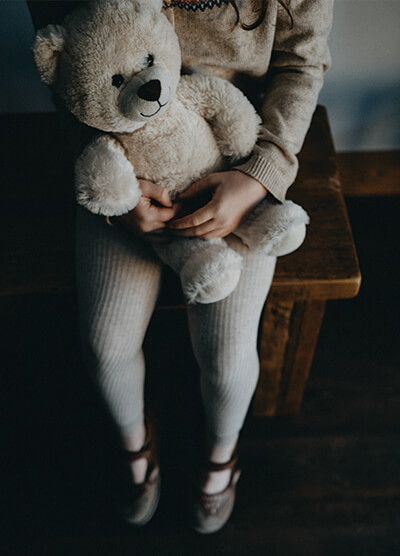Arthur D. Curtis Children’s Justice Center
We are a multidisciplinary team seeking the truth, protecting the rights of victims, and investigating and prosecuting child sexual and physical abuse cases while attempting to minimize trauma to victims and their families.
The Children’s Justice Center provides interview and advocacy services and coordinates a multidisciplinary response to alleged victims of abuse.
We cannot successfully eradicate child abuse and other forms of family violence without addressing institutionalized racism. Read CJC's statement on the killing of George Floyd here.
Help protect your children from victimization. Teach them the four rules of safety:
Check first – Check with a parent or trusted adult before making or changing plans, accepting gifts, or helping an adult. Tell them adults don’t ask children for help, they ask other adults.
Take a friend – When going places or playing outside, take a friend or two for safety. Offenders are more likely to target a child alone.
Tell people no – It’s OK to say no to people who make you feel unsafe, uncomfortable or confused, someone who hurts you or someone who asks you to break safety rules.
Tell a trusted adult – Help your children name five adults with whom they can talk when they feel unsafe, uncomfortable or confused. Help your child tell each of the people they are the child’s “trusted adult.”
Don’t discount delayed reports of victimization. A victim of child sexual abuse may not immediately, or ever, report their abuse for many reasons, including:
- Threats made by the offender
- Fear of consequences
- Lack of opportunity
- Lack of understanding of what happened
- Loyalty to the offender
It’s critical that children know they have a support system. Make sure your children know they can tell you anything and that you will love them no matter what.
Abusers often take time to get to know a family and get close to a particular child before attempting to take advantage of the child. Most people who abuse kids are family members or acquaintances. Kids may need to tell a stranger if harmed.
Advice from sex offenders: Teach children they never should keep secrets or feel they are to blame for abuse. Most kids worry they are to blame and think they should keep abuse a secret.
Set a house rule: Family members and friends don’t keep secrets, even about small, seemingly harmless things. Short-term surprises are OK if they are temporary and make people happy.
Teach your children the correct names for body parts. Pet names could impede a child’s ability to report victimization or make others understand.
Talk to your children about touch early and often. Avoid good touch/bad touch language, which may convey blame. Talk about OK touch and not OK touch. OK touch keeps kids safe and healthy. Not OK touch makes children scared, uncomfortable, unsure or confused.
Did you know 1 in eight/8 kids in the US will be a victim of child maltreatment before age 18. More than 1,500 children s die of abuse or neglect annually.
Know the signs of child abuse and where to report. Reporting abuse or neglect can protect a child and get a family help. In Washington, call 1.866.363.4276 or 1.866.562.5624 on weekends. In Oregon, call 1.855.503.7233. Call 911 in an emergency.
Know the four types of abuse:
- Physical abuse is a non-accidental physical injury. Intent to hurt is not required for a ruling of physical abuse.
- Sex abuse is sexual behavior with or exploitation of a child, including fondling, rape, incest and the production, possession and distribution of child sexual abuse materials.
- Neglect is a pattern of failing to provide for a child’s basic needs, which results in risk of or significant harm.
- Emotional abuse is any attitude, behavior or failure to act that interferes with a child’s mental health or social development.
Ask your children what social media platforms they use and watch how they use them. No app will tell you what technology your children use. Talk to them and monitor their online activities.
Be aware of unexplained changes in your child's appearance or behavior. They may be signs of abuse or neglect. They include:
- Physical abuse: Any injury such as a bruise, burn, fracture, abdominal or head injury that cannot reasonably be explained
- Sexual abuse: nightmares, depression, running away, abdominal pain, bedwetting, genital pain or bleeding, STDs, sexualized behavior
- Emotional abuse: Change in self-confidence; physical problems with no medical cause; abnormal fears, increased nightmares; running away
- Emotional neglect: Failure to gain weight, especially in infants, desperately affectionate behavior, voracious appetite, stealing food
Play what-if games to help teach children what to do if:
- Someone makes them feel unsafe, uncomfortable, afraid or confused
- Someone asks them to break a safety rule
- A stranger asks them for help or information
- They get lost or separated from their parent or caregiver
Support the important work CJC does to protect children. Contact CJC at 564.397.6002 for volunteer opportunities or to donate. Winston Churchill said, “We make a living by what we get, but we make a life by what we give.” Help CJC fight child abuse and exploitation.

